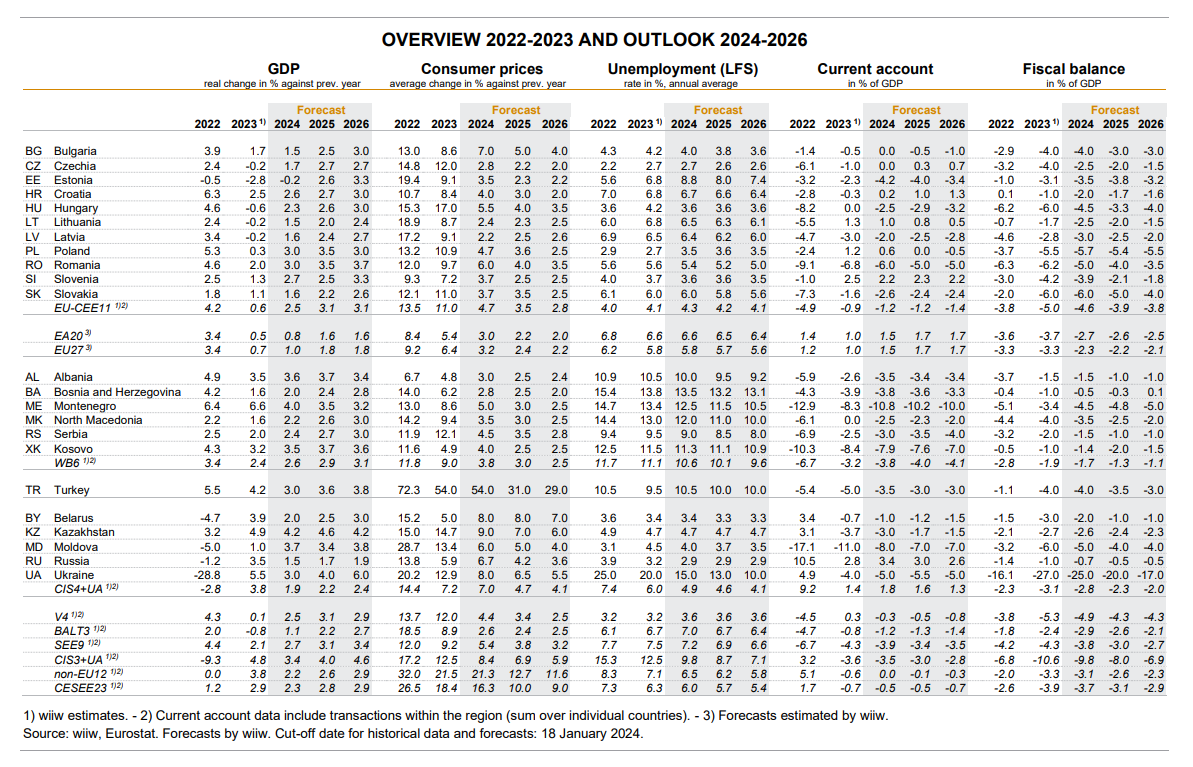wiiw Winter Forecast: Growth in Eastern Europe to strengthen in 2024
Even though the international environment is challenging, and there are significant downside risks, the economic outlook for 2024 has brightened significantly in most economies of Central, Eastern and Southeastern Europe (CESEE), and especially in the EU member states in the region. These are part of the findings of the 2024 winter forecast published by the Vienna Institute for International Economic Studies (wiiw):
Find all materials here: wiiw Winter Forecast 2024
Falling inflation, rising real wages and a pick-up in private consumption, combined with interest rate cuts and the expected recovery of the German economy by mid-year, lead the wiiw experts to expect growth in the CESEE region to be back on track in 2024.

For 2024, wiiw forecasts an average growth of 2.5% for the EU members in the CESEE region. This is well above both the previous year's growth (0.6%) as well as the expectations for the euro area this year (0.8%). Solid growth above this average is expected for example in Romania and Poland (3.0% each). The six countries of the Western Balkans will expand on average by 2.6% and Turkey will grow by 3.0% according to the wiiw forecast. With a prognosed GDP growth of 3.7% Moldova will show the most dynamic growth among the VIG countries in the region covered by the report.
Slight recovery in war-torn Ukraine
The slight recovery in war-torn Ukraine should continue, with GDP growth of 3.0% in 2024. Economic uncertainties caused by geopolitical risks and unpredictability surrounding the continuation of vital financial aid, however, let wiiw experts to cut their growth forecast by 1.2 percentage points from the last forecast in autumn.
Inflation is returning to normal
Although across all VIG markets inflation is expected to still be slightly above the EU27 and the euro area for 2024 a further decline compared to 2023 is anticipated (expect in Belarus), leading to single digits across all VIG markets covered with the exception of Türkiye. Inflation in the EU members of the region covered by the wiiw will more than halve in 2024 to an average of 4.7%. The Western Balkan countries will see a similarly steep decline to an average of 3.8%. Inflation will be particularly low in Latvia, Lithuania, Bosnia and Herzegovina, and Czechia, all of which will see the figure fall below 3%. Overall, however, inflation rates are expected to still remain slightly higher than before the invasion of Ukraine in 2022.
Outlook
After four tumultuous years, wiiw experts expect 2024 to be the year when things start to get back to normal, at least for EU-CEE and the Western Balkans. Interest rates, inflation and growth should start to look a bit more like before 2020. Despite this positive outlook, they also identify significant downside risks for 2024, which are dominated by geopolitical risks, particularly related to the next US administration and the wars in Ukraine and the Middle East.

